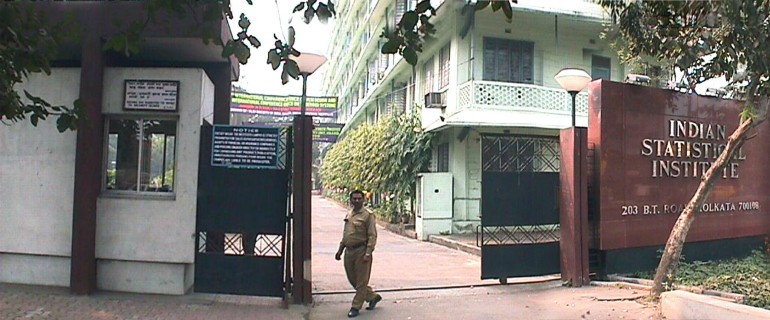What began as a small room in the Presidency College in 1931, now comprises buildings on several acres of land in four major cities (Calcutta, New Delhi, Bangalore and Hyderabad)! What began with a total annual expenditure of less than Rs. 250 in 1931, now has a total annual expenditure of overRs. 15,000,000! What began in 1931 with a solitary human 'computer' working part-time, now comprises over 250 faculty members and over 1,000 supporting staff and several modern-day personal computers, workstations, minicomputers, supermini computers and mainframe computers! Impressive as these figures are, they convey little idea of the road traversed, the range of activities undertaken and the intimate relationship of the Institute with the life of the nation.
Mahalanobis set up the Statistical Laboratory in the Presidency College sometime in the 1920s. On 17 December 1931, the Indian Statistical Institute was founded as a learned society and housed in the Statistical Laboratory. The Institute was registered on 28 April 1932, as a non-profit distributing learned society under the Societies Registration Act (XXI of 1860) and is now registered under the West Bengal Societies Registration Act XXVI of 1961 amended in 1964. Sir R.N. Mookerjee accepted the office of the President of the Institute, and held this office until his death in 1936.
During the 1920s and until the mid-1930s, all or nearly all the statistical work done in India, was done single-handedly by Mahalanobis. The early statistical studies included analyses of data on stature of Anglo-Indians, meteorological data, rainfall data, data on soil conditions, etc. Some of the findings of these early studies were of great impact in the control of floods, development of agriculture, etc., and led to the recognition of Statistics as a key discipline.
The Institute was assigned the responsibility of preparing the draft second five year plan, by Government of India with Professor P.C Mahalanobis as the chief architect. The unique model thus adopted since then became well-known as the Mahalanobis Growth Model.
Mahalanobis' influence was so pervasive that students of Physics began to take interest in Statistics. Subhendu Sekhar Bose was the most notable of them. Later, several talented young scholars including J.M. Sengupta, H.C. Sinha, R.C. Bose, S.N. Roy, K.R. Nair, K. Kishen and C.R. Rao, joined to form an active group of statisticians. Mahalanobis continued to be the nucleus. Theoretical research in Statistics began to flourish in the Institute. Research on large scale sample surveys won Mahalanobis a Fellowship of the Royal Society. Design and analysis of agricultural experiments also bloomed and led to some international contacts, notably with Sir Ronald A. Fisher..


